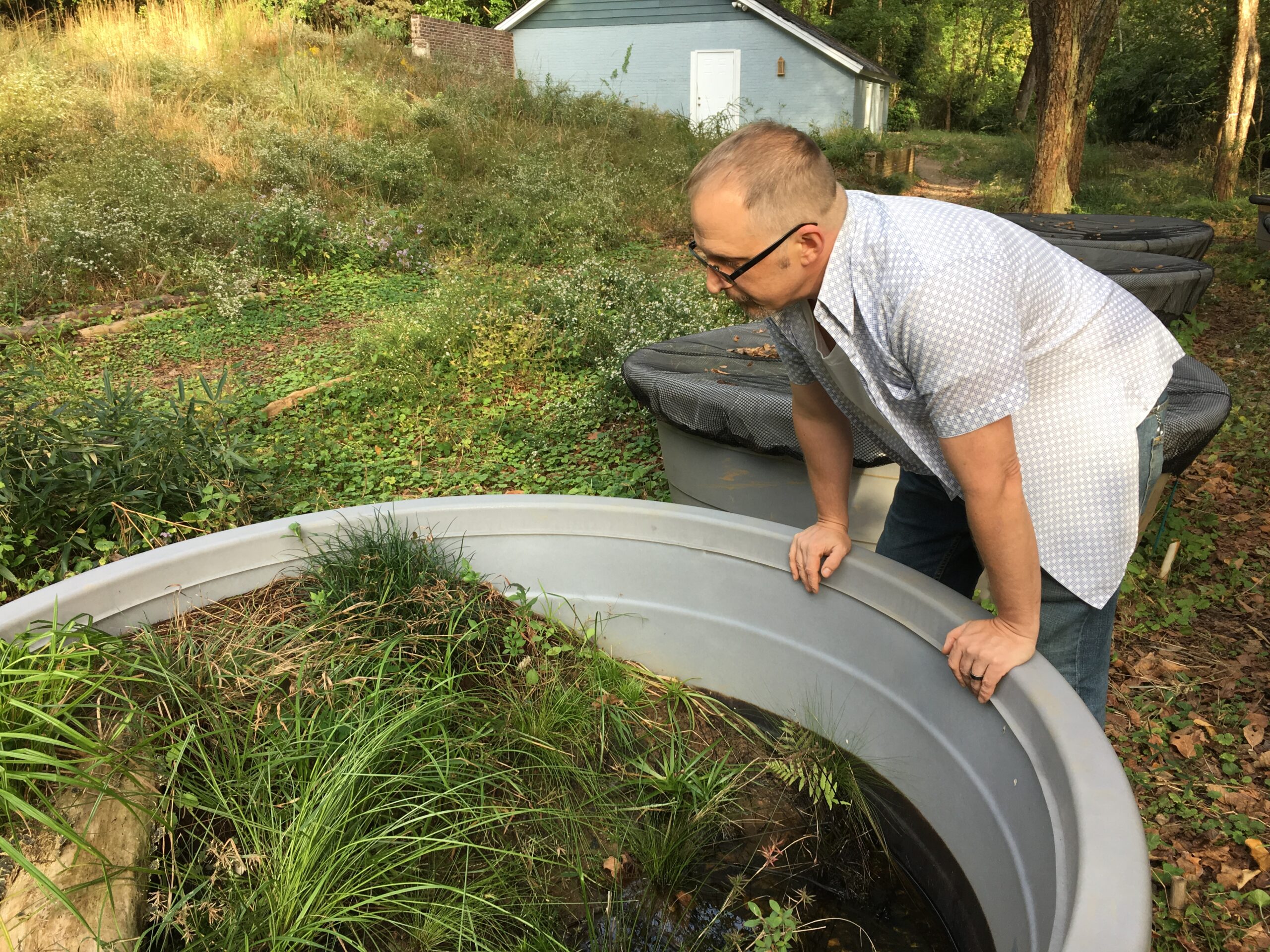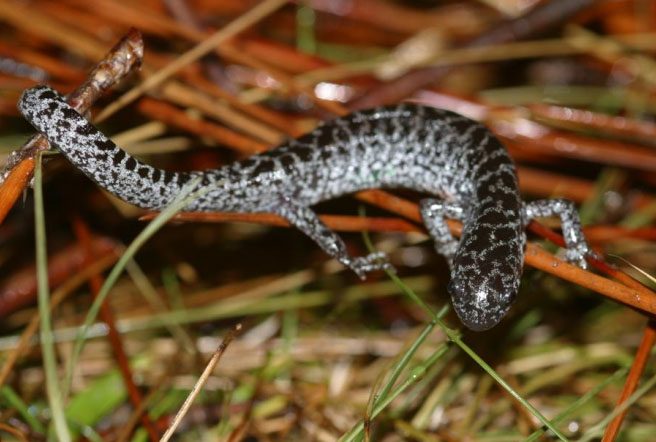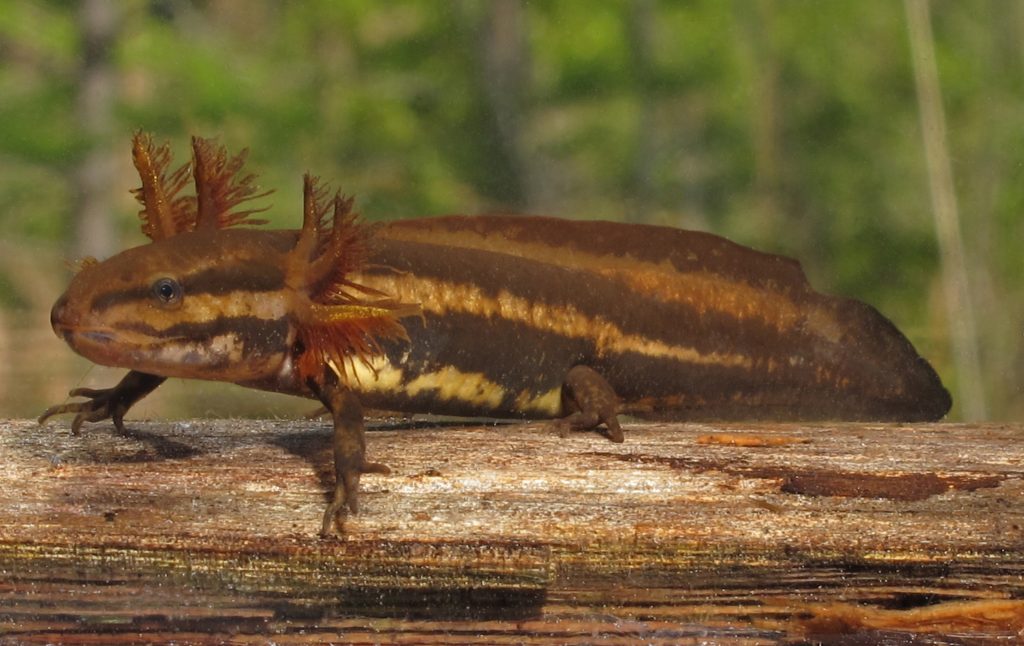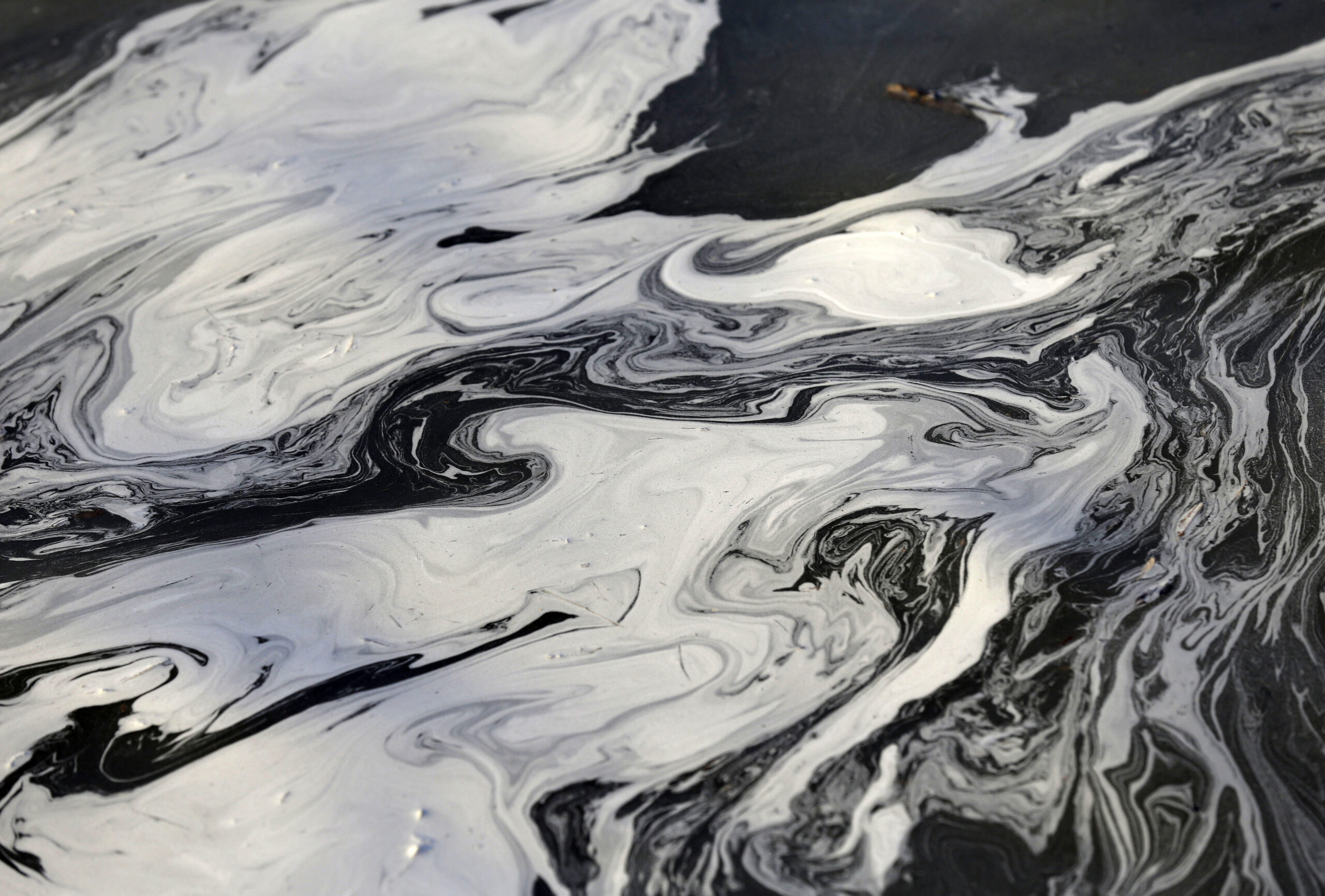Taking Stock Of Hurricane Michael’s Effects On Rare Wild Animals

Mark Mandica, director of the Atlanta-based Amphibian Foundation, looks at an outdoor “mesocosm” where the frosted flatwoods salamanders live that he’s hoping to breed.
Molly Samuel / WABE
Georgia and Florida farms and cities are still assessing the damage from Hurricane Michael, and beginning to put things back together. The storm also affected natural places and wild animals, and biologists are evaluating those impacts.
Take the frosted flatwoods salamander, a sleek little silver and black animal that used to live in the sandy coastal plain in Georgia and other Southern states, where the longleaf pine forests grew.
Now, there are only a few places where the salamanders live in the wild, including just one in Georgia, at Ft. Stewart.

“The site in Georgia, it’s intermittent when we’re able to find them,” said Mark Mandica, director of the Atlanta-based Amphibian Foundation. “The last place where there was viable population, where we would see lots of salamanders every year, is St. Marks.”
That’s St. Marks National Wildlife Refuge in the Florida Panhandle, and it was flooded by Hurricane Michael. (For fans of the Southern Reach trilogy by Jeff VanderMeer or the movie based on the first book, “Annihilation,” this is the place that inspired Area X, including the lighthouse.)
“We are one of the few remaining stable populations of the frosted flatwoods salamander in the country,” said Terry Peacock, refuge manager at St. Marks.
“The adults were probably underground during the surge,” in the burrows the salamanders live in, which are near freshwater, she said.
The hurricane flooded some of those freshwater ponds with saltwater. And, Peacock said, this is the salamanders’ breeding season. If they lay their eggs in salty water, the eggs might dry up, she said, or if they hatch, the larvae might not survive.
Mandica said when he heard the hurricane was headed for the area, he was worried.

“Feeling utterly powerless,” he said. “Our first instinct was to race down there and start grabbing salamanders, but that would be impossible for animals underground.”
The storm didn’t end up being as destructive at the refuge as it was in other places. There wasn’t as much wind damage there, though there was the flooding.
“These events happen,” St. Marks biologist Jonathan Chandler said. “This one just happened to impact a highly imperiled species.”
Other rare species in the path of the hurricane include endangered red-cockaded woodpeckers and red wolves, described by the U.S. Fish and Wildlife Service as one of the world’s most endangered wolves. The woodpeckers at St. Marks National Wildlife Refuge seem to have handled the storm, said Chandler.
And the wolves, a breeding pack that is managed at St. Vincent National Wildlife Refuge, also survived.
It’s not all doom and gloom for the salamanders, either, said Peacock. Some of the freshwater areas where they live at St. Marks weren’t flooded, and biologists have already found a few adult survivors since the storm.
Chandler said he’s optimistic about the population at the refuge, though they won’t really know how they did until surveys in the spring.
In Atlanta, Mandica has a group of frosted flatwoods salamanders from St. Marks that he is hoping to breed in captivity. Their offspring could help bolster wild populations. Though, Mandica says, they may look to reintroduce them farther inland, further away from threats from storm surge and sea level rise.







